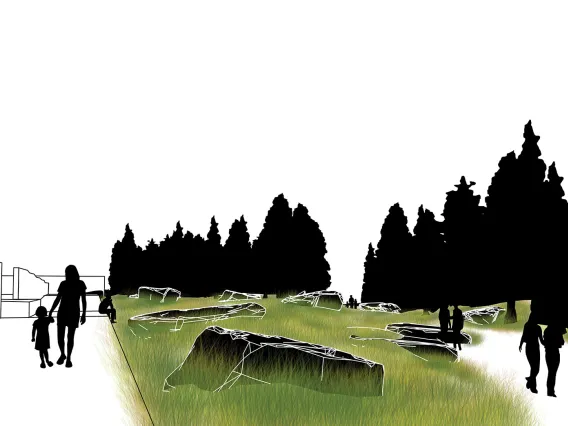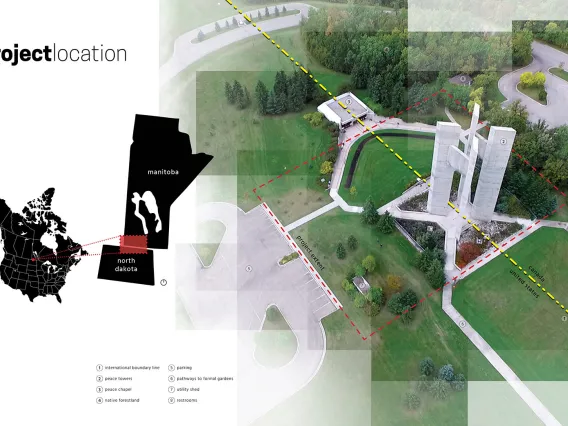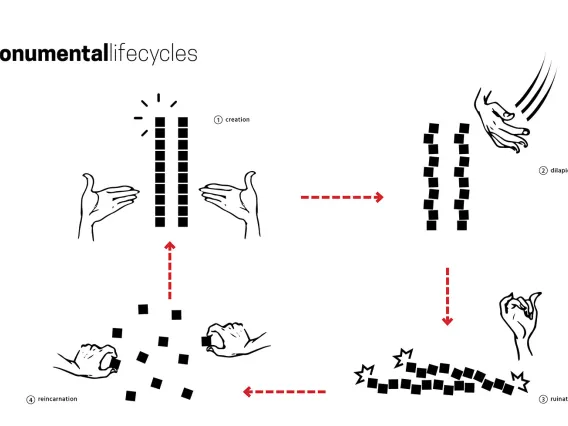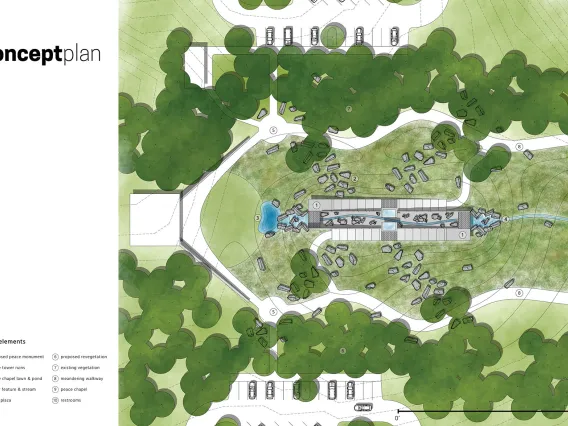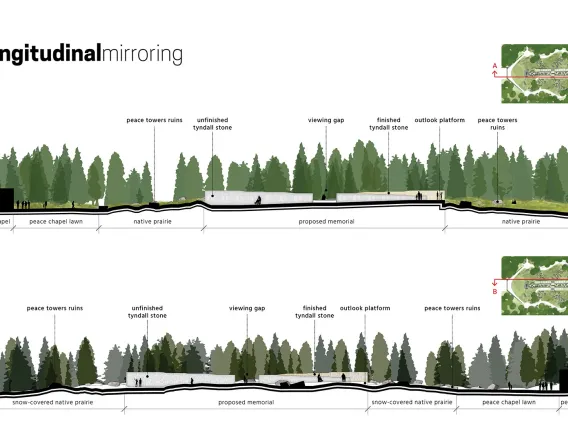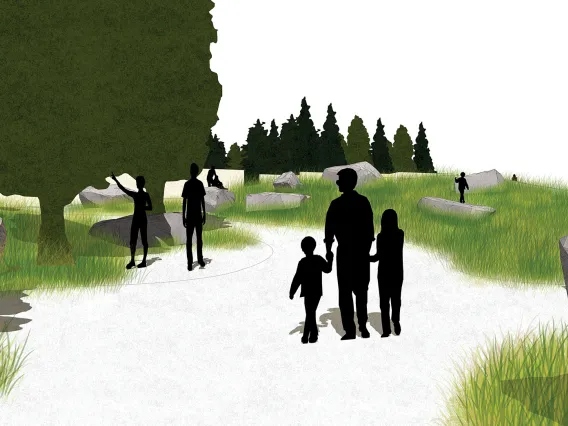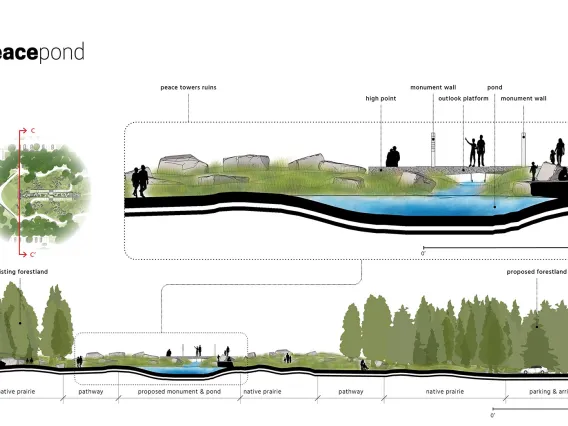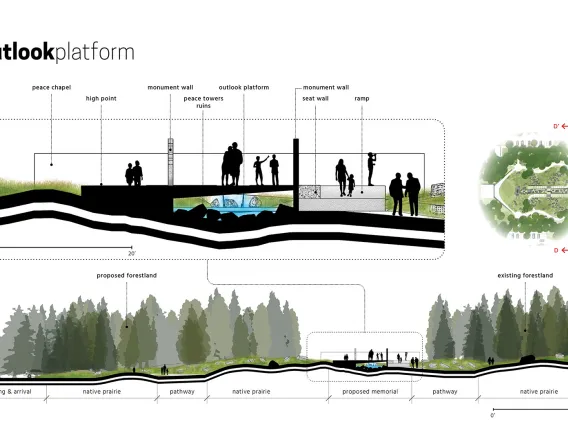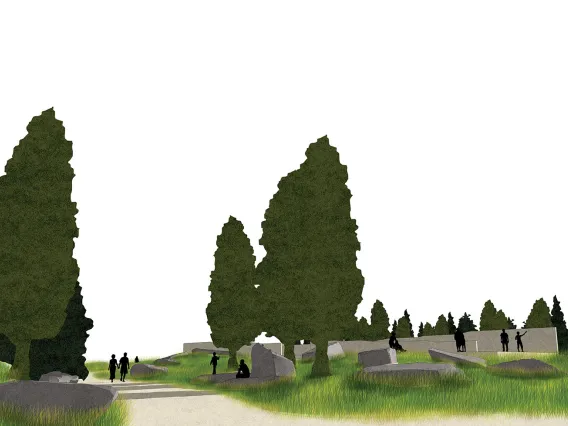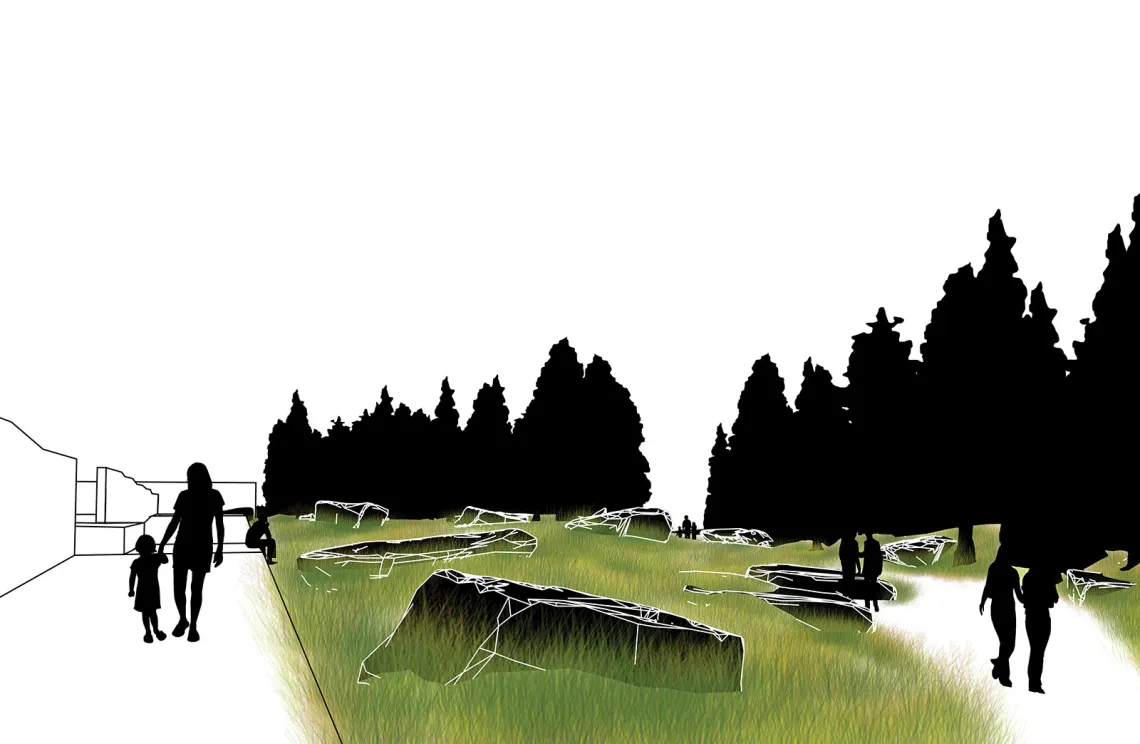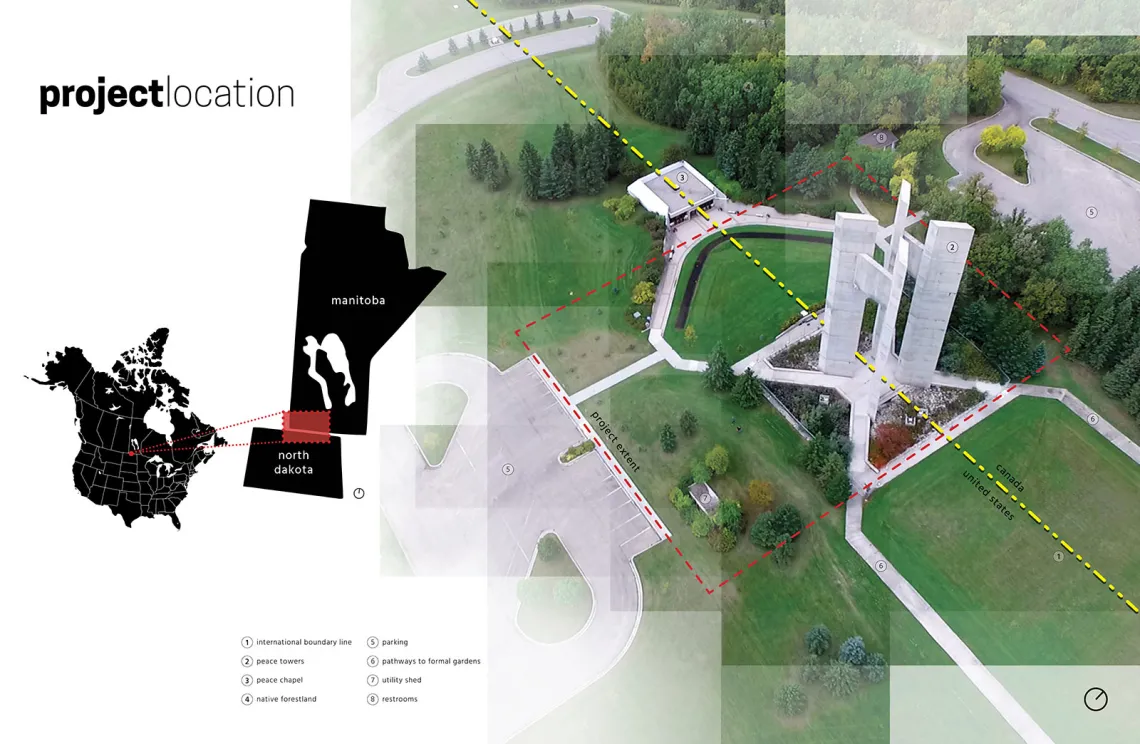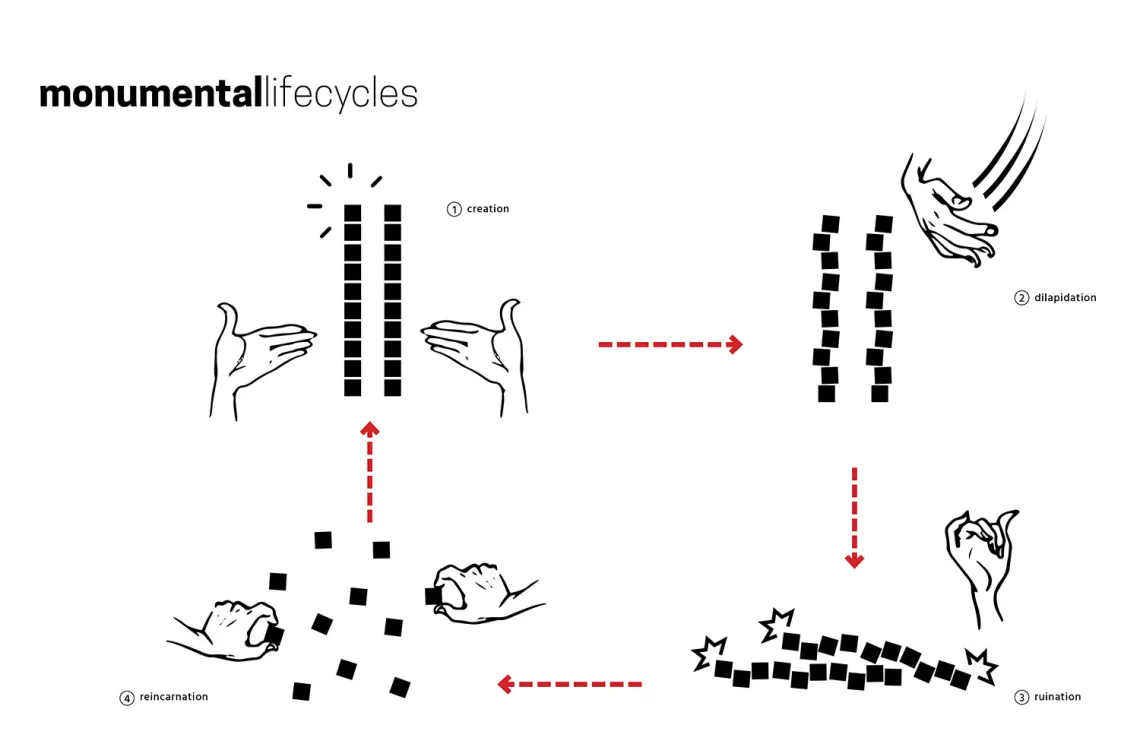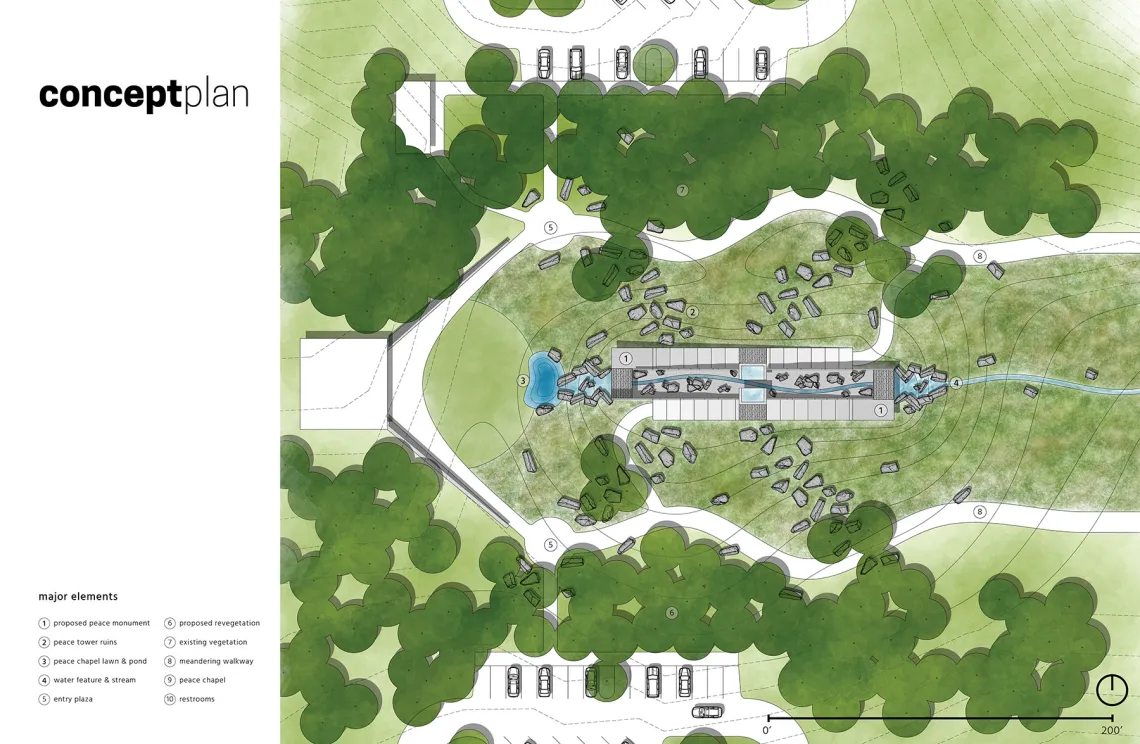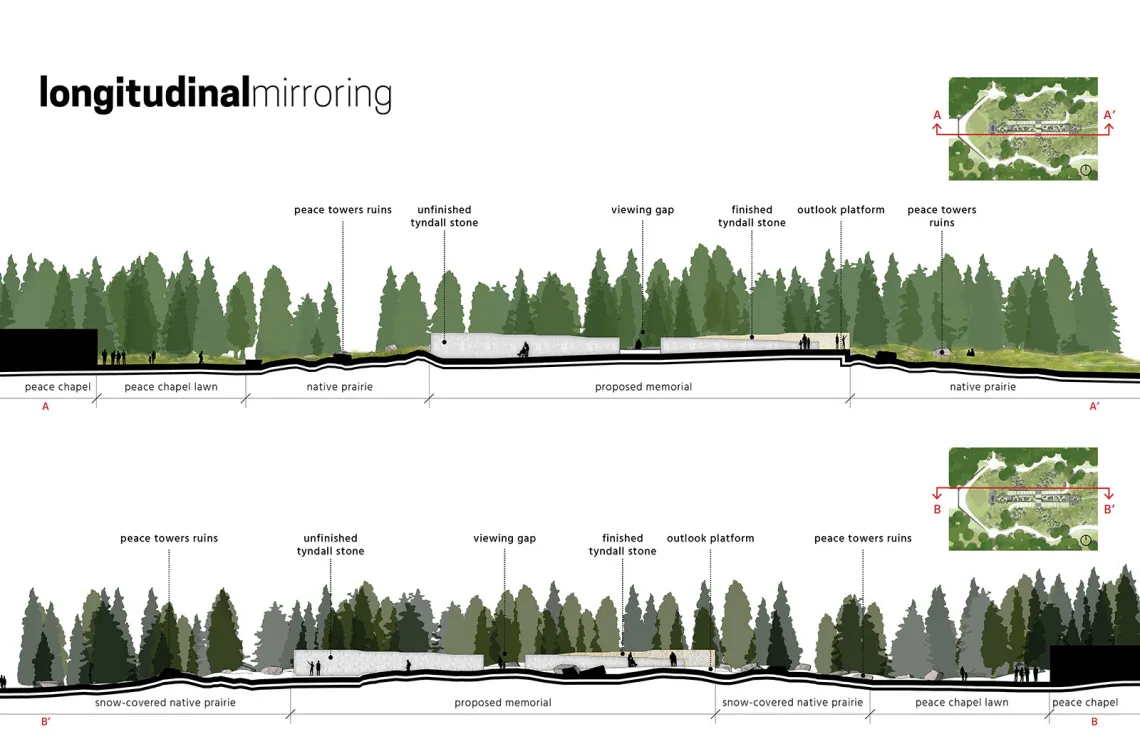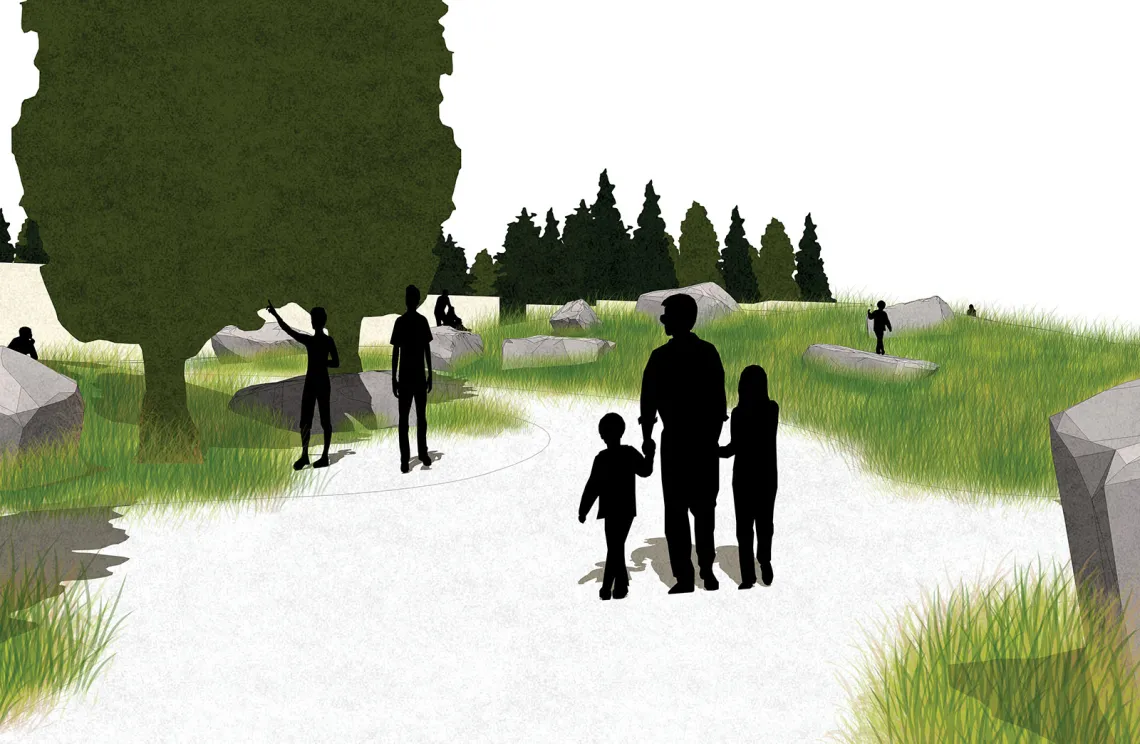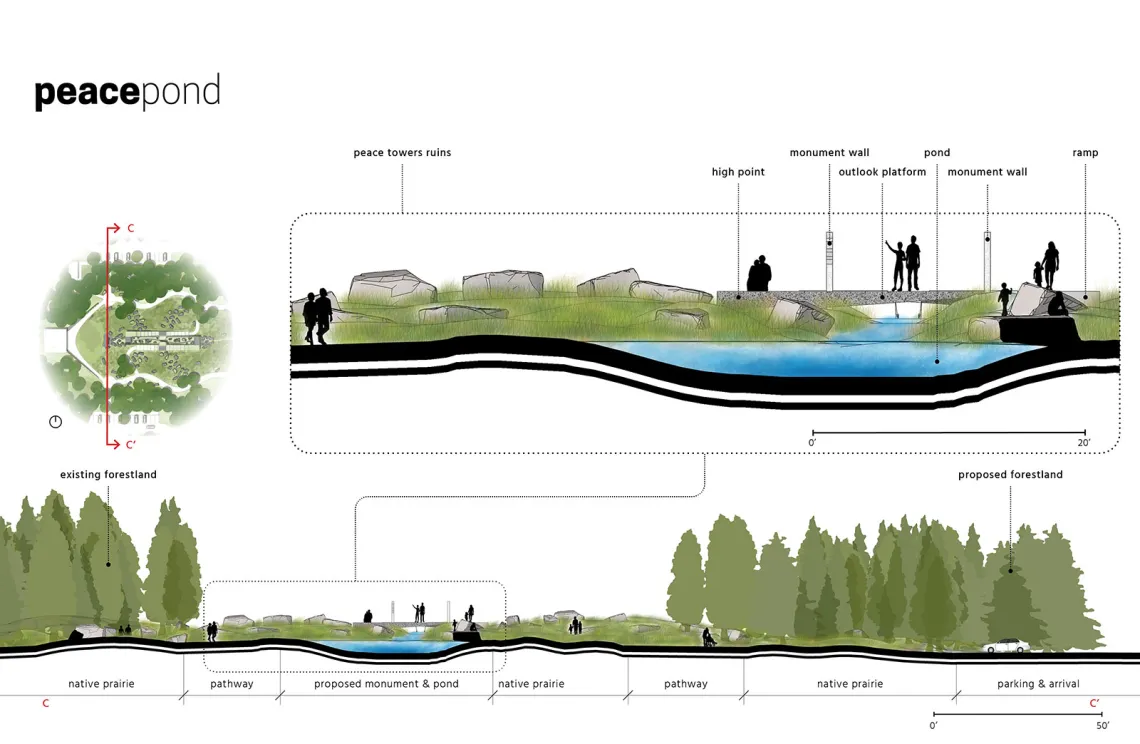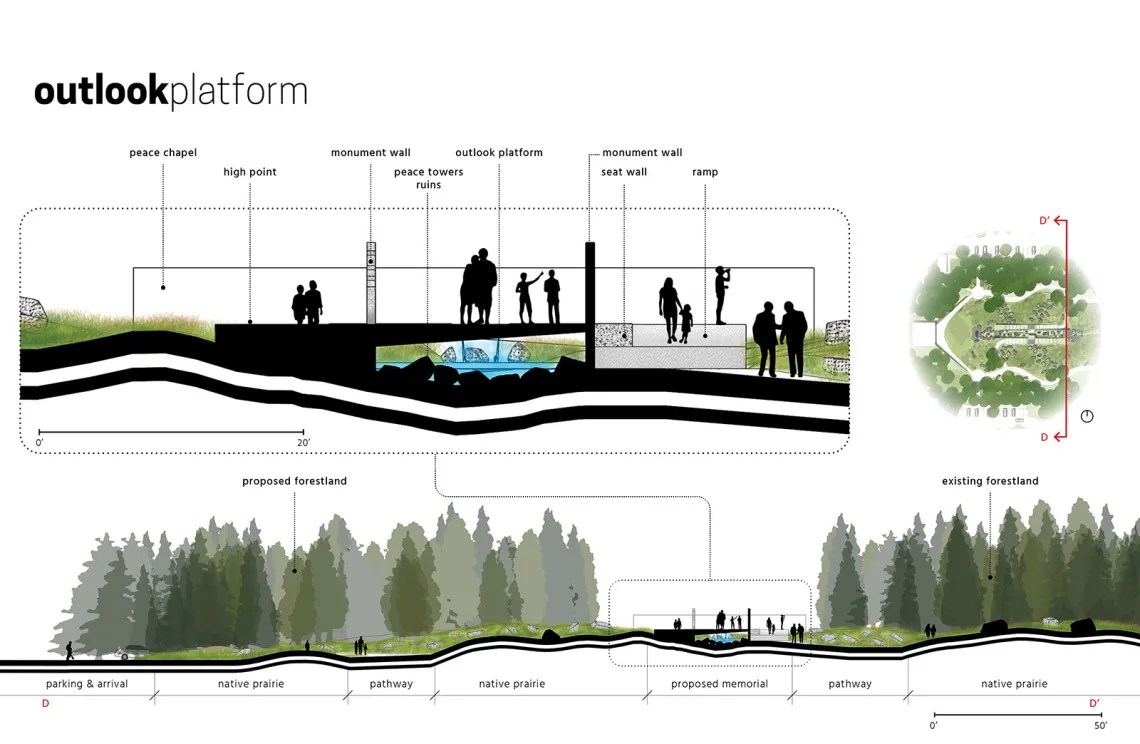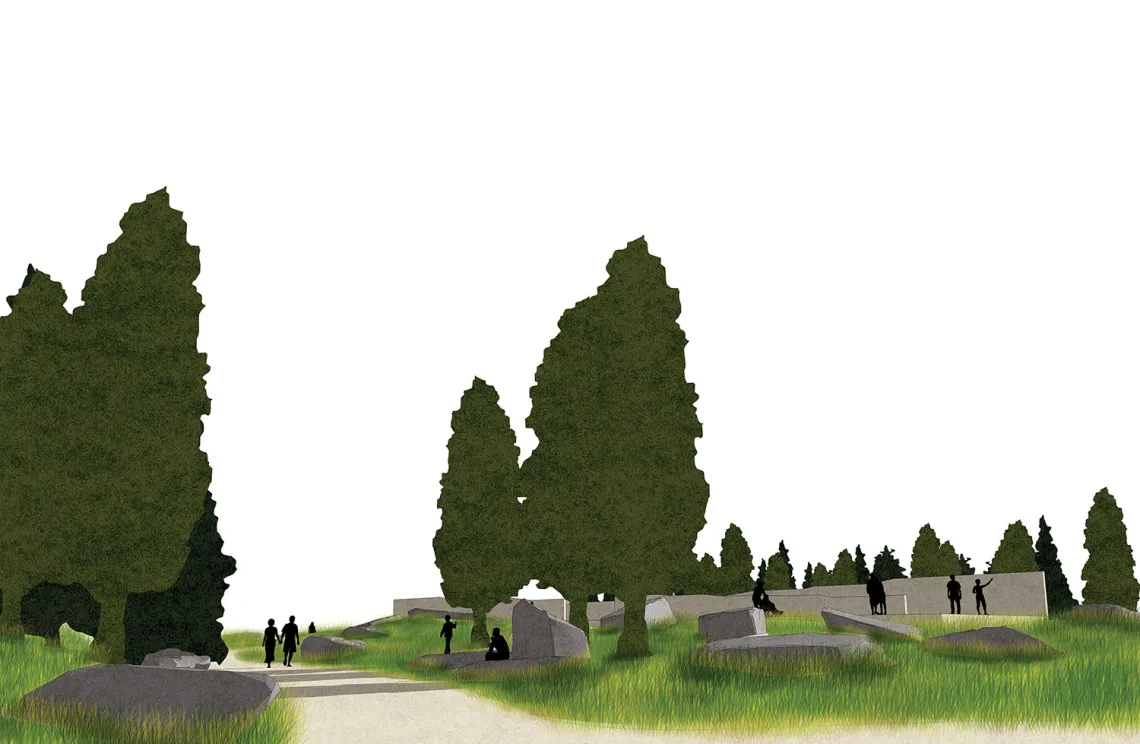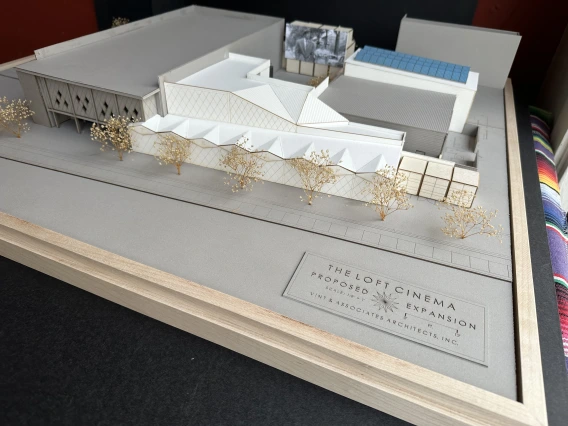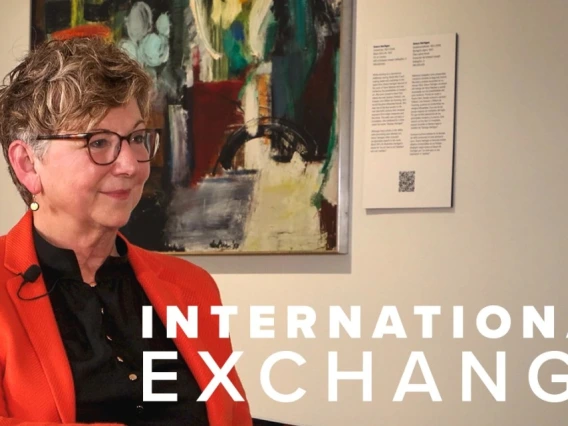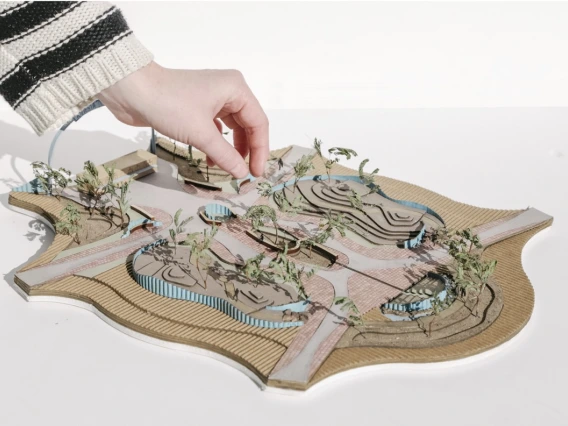Confronting Borderlands: Kenneth J. Kokroko '17 MLA

Image Gallery
Click a thumbnail below to view a larger image and begin slideshow:
Project Narrative
For more than 75 years, the International Peace Garden (IPG), located in the scenic Turtle Mountains and straddling the United States-Canada border, has celebrated the peaceful coexistence between the two countries. Since its inception, the IPG has attracted hundreds of thousands of visitors from around the world and has expanded its programming to offer recreational activities and amenities, in addition to its stunning formal gardens.
In 1982, four Peace Towers were erected along the International Boundary Line to celebrate the IPG’s 50th anniversary and connect the U.S. and Canada. Since then, moisture has seeped into the poorly constructed cast-in-place concrete towers because of the extreme freeze and thaw conditions characterizing the region. Due to public safety concerns, the towers must be removed and the site redesigned. This project proposes a new monument to peace between nations and seeks to integrate the dismantled Peace Towers into the newly designed landscape.
The conceptual impetus for the project is undergirded by an interpretive approach integrating the life history of the Peace Towers into the design concept. The proposed design reacts to the characterization of the dilapidated Peace Towers as waste and attempts to reconfigure the pieces into a new monument that both challenges and celebrates the notion of peace between nations.
The proposed design offers visitors of all ages and abilities a variety of experiences and contrasts the formal gardens to the east with meandering pathways and native vegetation. Balance and formality are maintained through the creation of symmetry north and south of the International Boundary while the orthogonal layout of the proposed monument juxtaposes the naturalized landscape. The arbitrary boundary line is blurred by the sinuous water feature which traverses the monument and extends eastward to the formal gardens and ends at a reflecting pond located in the Peace Chapel lawn. Earthworks and plantings encompass the ruins of the Peace Towers, which have been left as they fell during demolition in reference to the history of the site.
The newly proposed peace monument rejects the grandiose vertical scale of the demolished Peace Towers and is tucked into mounding earthworks and the ruins from the previous monument. Straddling the International Boundary Line, the monument calls attention to barriers to peace that are often resultant from the establishment of arbitrary borders. Visitors are confronted with diametrically opposing walls which inhibit circulation and views across the boundary. The result is a guided progression through the site that ends at outlook platforms providing expansive views along the border line and to the surrounding landscape. To convey a sense of equality, a cornerstone of peace, the visitors’ experience of the monument is similar whether entering from the north or the south.
All images are by Kenneth J. Kokroko and may not be used or reproduced without express written permission of their creator.

